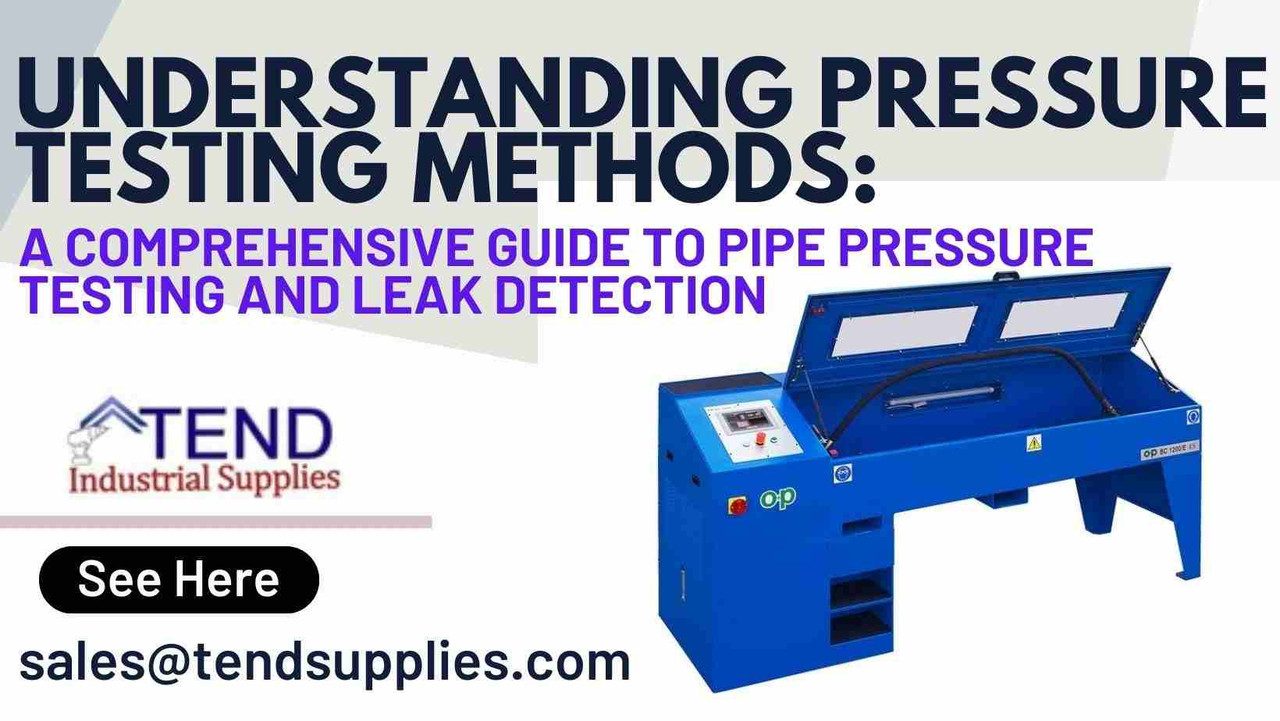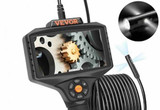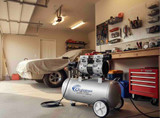Understanding Pressure Testing Methods: A Comprehensive Guide to Pipe Pressure Testing and Leak Detection
Understanding Pressure Testing Methods: A Comprehensive Guide to Pipe Pressure Testing and Leak Detection
Key Takeaway of this article
The vital importance of understanding and implementing proper pressure testing and leak detection methods in various industrial applications.
From selecting the appropriate testing method to adhering to safety protocols and investing in quality equipment, each aspect plays a crucial role in ensuring the integrity, efficiency, and safety of systems.
Professionals seeking to uphold the highest standards in their testing processes can benefit from the comprehensive insights provided in this guide, along with the quality tools offered by Tend Industrial Supplies.
Introduction
Pressure testing is essential in various industries, particularly in plumbing, oil, gas, and manufacturing. It involves applying pressure to a system or component to check for leaks, structural integrity, and overall functionality. The importance of pipe pressure testing and leak detection cannot be overstated. Leaks can lead to wasted resources, environmental harm, and even catastrophic failure in critical systems. Proper testing ensures that pipes and systems are robust, reliable, and free from defects that could lead to failure.
For professionals looking to invest in quality tools for pressure testing, Tend Industrial Supplies offer a wide range of options to suit various testing needs.
Two Main Pressure Testing Methods
A. Hydrostatic Testing (Water)
Hydrostatic testingis a method that involves filling a pipe or vessel with water and pressurizing it to a specific level. The system is then monitored for a set period to detect leaks or structural weaknesses. This method is widely used for its safety and effectiveness, especially for testing large systems.
B. Pneumatic Testing (Air)
Pneumatic testing uses air or another gas to pressurize the system. It's often used for systems without water exposure or where detecting small leaks is critical. Pneumatic testing is faster than hydrostatic testing but requires careful handling due to the compressibility of gases.
C. Comparison between the Two Methods
While both hydrostatic and pneumatic testing are valuable in detecting leaks and assessing structural integrity, they have distinct applications and advantages:
- Hydrostatic Testing: Preferred for large systems, offers better safety and is more effective in detecting small leaks.
- Pneumatic Testing: Ideal for systems sensitive to water, it provides quicker results but requires more caution due to potential energy stored in compressed gases.
The choice between hydrostatic and pneumatic testing depends on the specific requirements of the tested system. Understanding the characteristics and applications of both methods ensures that the right approach is chosen for each unique situation, contributing to the safety and efficiency of industrial operations.
Pipe Pressure Testing
A. Definition and Purpose
Pipe pressure testing is a critical process that involves applying pressure to a piping system to ensure its integrity, reliability, and leak-free performance. This testing aims to identify any potential weaknesses, defects, or leaks that could lead to system failure or inefficiency.
B. Procedure and Standards
The procedure for pipe pressure testing typically involves the following steps:
- Preparation: Ensure the system is clean and free from any debris.
- Filling: Fill the pipe with the testing medium (usually water or air).
- Pressurization: Apply pressure to the specified level according to the relevant standards.
- Monitoring: Monitor the system for a set period to detect any pressure drop or visible leaks.
- Documentation: Record the results and ensure compliance with applicable standards.
Depending on the industry and region, various international standards govern pipe pressure testing, such as ASME, ASTM, and ISO.
C. Equipment Used in Pipe Pressure Testing
The equipment used in pipe pressure testing includes pressure gauges, pumps, hoses, and specialized fittings. The choice of equipment depends on the type of test (hydrostatic or pneumatic) and the specific requirements of the tested system.
Pressure Leak Test
A. Importance of Detecting Leaks
Detecting leaks in a system is vital for safety, efficiency, and environmental protection. Undetected leaks can lead to system failure, wasted resources, and potential environmental hazards.
B. Methods for Conducting a Pressure Leak Test
Several methods can be used to conduct a pressure leak test, including:
- Bubble Test: Applying a soap solution to detect bubbles at the leak site.
- Electronic Leak Detection: Using specialized equipment to detect changes in pressure or flow.
- Ultrasonic Leak Detection: Utilizing ultrasonic waves to identify the sound of a leak.
C. How to Interpret Results
Interpreting the results of a pressure leak test involves analyzing the data collected during the test. A stable pressure reading indicates a leak-free system, while a drop in pressure or detecting bubbles or sounds may indicate a leak.
Pipe pressure and pressure leak tests are essential in various industries to ensure systems' safety, efficiency, and reliability. Understanding the procedures, standards, equipment, and methods involved in these tests is crucial for design, maintenance, and inspection professionals.
Difference Between Leak Test and Pressure Test
A. Understanding the Terminology
While the terms "leak test" and "pressure test" are often used interchangeably, they refer to different testing procedures:
- Leak Test: Focuses specifically on identifying and locating leaks within a system.
- Pressure Test: A broader term encompassing testing the system's integrity, including leak detection, by applying pressure.
B. Key Differences and Applications
The critical differences between leak testing and pressure testing lie in their purpose, methods, and applications:
- Purpose: Leak testing aims to find leaks, while pressure testing evaluates the system's overall integrity, including leak detection.
- Methods: Leak testing may use various techniques, such as bubble tests or electronic detection, while pressure testing typically involves hydrostatic or pneumatic methods.
- Applications: Leak testing is used in quality control and maintenance, while pressure testing is often part of the design and certification process.
Common Leak Testing Methods
A. Overview of Various Leak Testing Methods
Leak testing can be conducted using several methods, each with its unique characteristics and applications. Some standard methods include:
- Bubble Test: Utilizes a soap solution to detect leaks visually.
- Electronic Leak Detection: Employs specialized equipment to sense changes in pressure or flow.
- Ultrasonic Leak Detection: Uses sound waves to detect the noise a leak creates.
B. Most Common Method and Its Effectiveness
The bubble test is often considered the most common among the various leak testing methods due to its simplicity and cost-effectiveness. By applying a soap solution to the suspected leak area and observing for bubble formation, this method provides a visual indication of even small leaks. While the bubble test is widely used and effective for many applications, it may not be suitable for detecting extremely small or slow leaks. More advanced methods like electronic or ultrasonic leak detection may be preferred in such cases.
Understanding the difference between leak testing and pressure testing and being aware of the standard leak testing methods is essential for professionals involved in system design, maintenance, and quality control. Choosing the appropriate testing method based on the specific requirements and characteristics of the system ensures accurate results and optimal performance.
VII. Safety Considerations
A. Safety Protocols During Testing
Safety is paramount during testing, and adherence to established safety protocols is essential. This includes:
- Following manufacturer's guidelines for equipment use.
- Wearing appropriate personal protective equipment (PPE).
- Ensuring that the testing area is clear of unnecessary personnel and obstacles.
- Monitoring the system continuously during the test to detect any anomalies.
B. Importance of Proper Training and Equipment Handling
Proper training in the use of testing equipment and the understanding of testing procedures are vital to ensure safety. Inadequate training can lead to mishandling of equipment, incorrect test results, and potential accidents. Regular training sessions and certifications help maintain high safety standards.
Conclusion
Pressure testing and leak detection are critical processes in various industries, ensuring systems' integrity, efficiency, and safety. From understanding the different testing methods to recognizing the importance of safety protocols, this comprehensive guide has covered key aspects of pressure testing.
Investing in quality testing equipment is not just a matter of compliance but a commitment to excellence and safety. Quality tools provide accurate results, last longer, and contribute to a safer working environment.
For professionals looking to elevate their testing standards,Tend Industrial Supplies offers a wide range of industrial and professional air tools designed to meet diverse testing needs. Explore their collection and take a step towards enhanced safety and efficiency in your testing processes.







